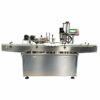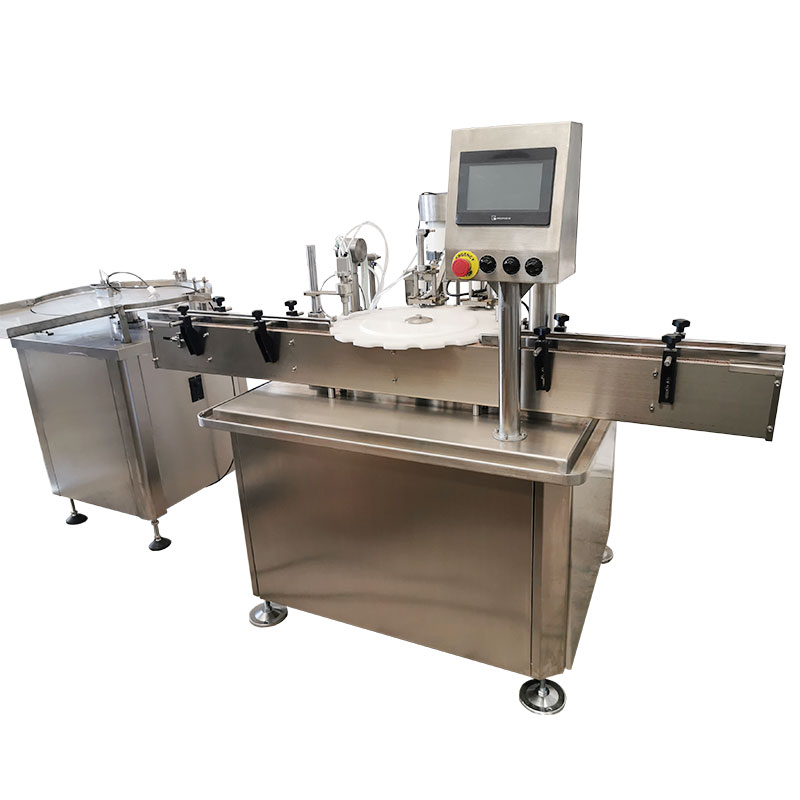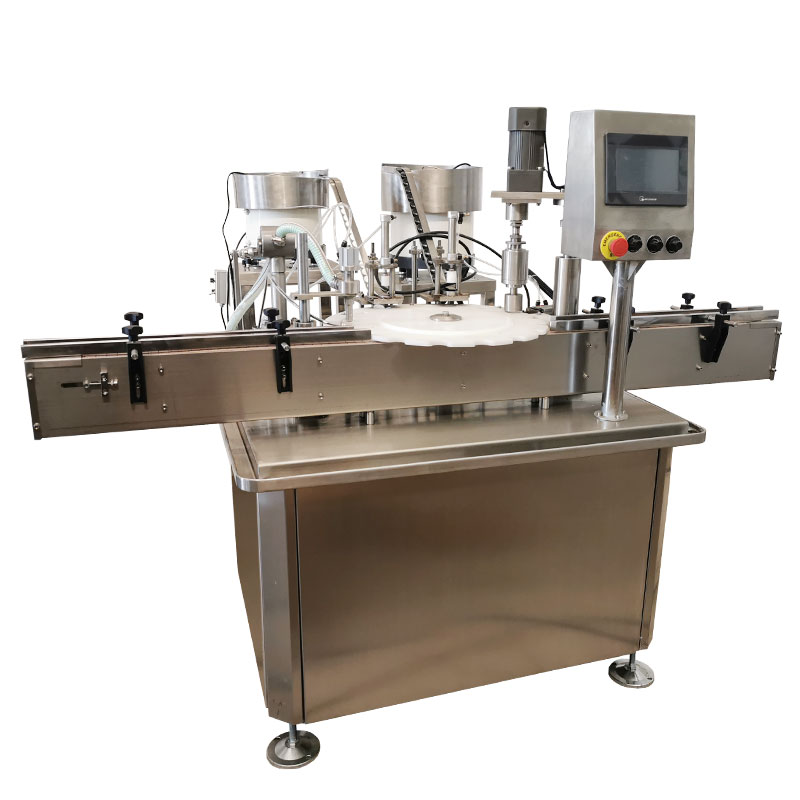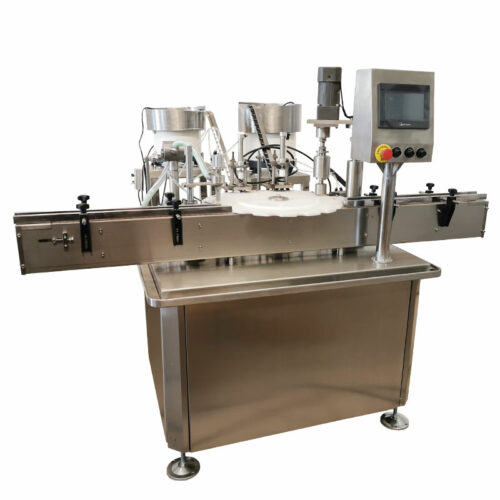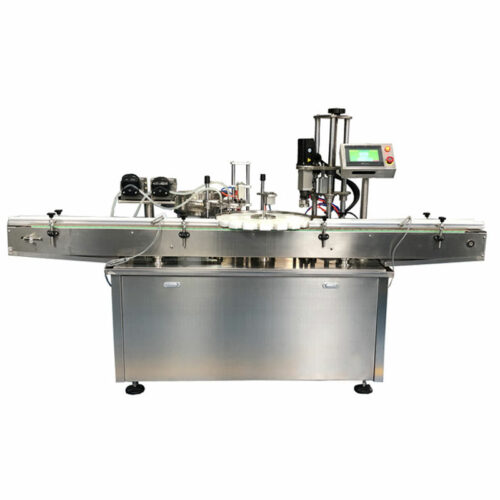Bottle liquid filler can fill PET, plastic, glass, aluminium, stainless steel, copper and other containers. Bottles, jars, containers & other solid packing types can be filled with our bottle filling machines. The basic unit consists of base structure, stainless steel slat conveyor belt, piston pump and filling needles.
This machine is suitable for industries such as pharmaceuticals, food, and chemicals, and is designed for low viscosity materials. The entire control system of the machine applies programmable control technology and utilizes a human-machine page for operation. It features a compact structure, easy operation, and stable performance.
This machine is suitable for industries such as pharmaceuticals, food, and chemicals, and is designed for low viscosity materials. The entire control system of the machine applies programmable control technology and utilizes a human-machine page for operation. It features a compact structure, easy operation, and stable performance.
Here are the key features and considerations for a cream jar filling capping machine:
- Volumetric Filling System: Creams often require accurate dosing, and a volumetric filling system is commonly used. This system ensures that each jar receives the correct amount of product, maintaining consistency and quality.
- Positive Displacement Pump: Many cream filling machines use positive displacement pumps, which are well-suited for handling viscous products. These pumps provide a reliable and consistent flow of cream during the filling process.
- Dosing Accuracy: Look for a machine that offers high dosing accuracy to prevent overfilling or underfilling of jars. Precise dosing is essential, especially in cosmetic and pharmaceutical applications where product consistency is critical.
- Jar Handling System: The machine should have a mechanism for handling jars, which may include an automatic jar loading system and a conveyor system to move jars through the filling and capping stations.
- Nozzle Design: The filling nozzles should be designed to minimize product spillage and ensure clean and accurate filling. Some machines may have adjustable nozzles to accommodate different jar sizes.
- Capping Mechanism: The capping system should be compatible with the type of cap used for cream jars. It may include features such as screw capping, snap capping, or other sealing mechanisms.
- Cap Feeding System:A cap feeding system ensures a continuous supply of caps to the capping station. This may involve a cap sorting mechanism to properly orient and feed the caps for precise application.
- Adjustable Filling Speed: The ability to adjust the filling speed allows for flexibility in production and helps match the machine’s speed to the specific requirements of the cream being filled.
- Easy Cleaning and Maintenance: Cream filling machines should be designed for easy cleaning to maintain hygiene standards. Look for features such as quick-change parts and accessibility for cleaning and maintenance purposes.
- Material Compatibility:Ensure that the materials used in the construction of the machine are compatible with creams and cosmetic products. Stainless steel is a common material choice for parts that come in contact with the product.
- Quality Control Features: Some machines may include quality control mechanisms, such as weight checks or vision systems, to ensure that each jar is filled accurately and that the caps are applied correctly.

 Tube Filling Machine
Tube Filling Machine Cartoning Machine
Cartoning Machine Cup Filling Machine
Cup Filling Machine Coffee Capsule Machine
Coffee Capsule Machine Filling Capping Machine
Filling Capping Machine Labeling Machine
Labeling Machine Sachet Packing Machine
Sachet Packing Machine Other Machines
Other Machines
